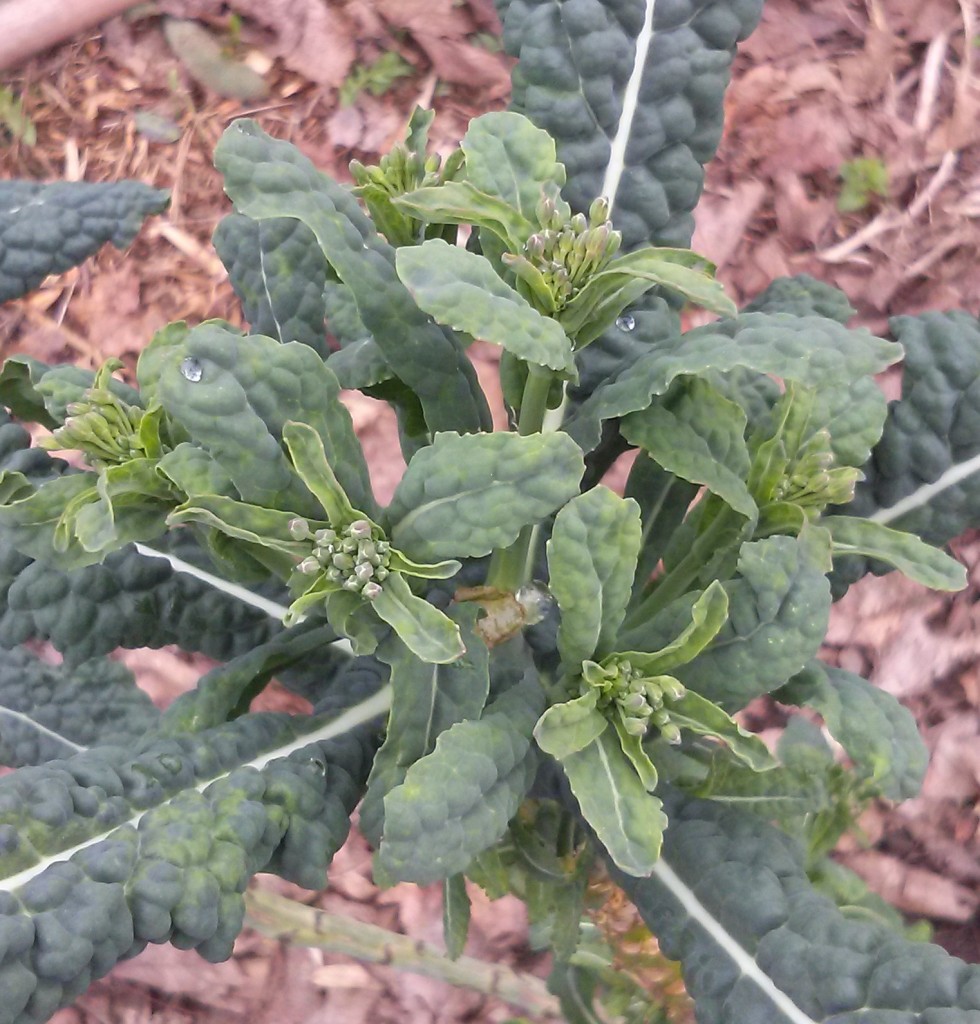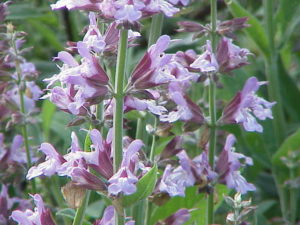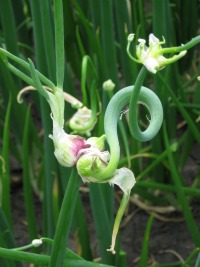If you have any kale, collards or other Brassicaceae overwintered from last year, you may notice small clusters of flower buds that look like little broccoli florets. (In fact, they are – broccoli is a kale that has been bred for gigantic flower clusters, and to produce them in the first season rather than the second. )
These flower clusters are called raab or rapini in European cuisine, and are a real treat. They first appear in early spring, and grow faster as the weather warms. Don’t pull the plant out! Pick the rapini as they appear, daily if possible, and they will continue to feed you for about a month.
Your earliest rapini will be mild, more like broccoli; as the season progresses the shoots will have a stronger, delightful mustard flavor. Raw, they are spicy, but like mustard greens, mellow with cooking.
Harvest with a quick flick of your thumb and forefinger, or cut with a thumbnail. Any stem you can harvest this way with a clean break will be tender and not stringy. Nibble on a bit of one you think broke cleanly to be sure your standards are high enough. For the best flavor, harvest as close as possible to dinnertime.
Braised Rapini with Green Garlic
On low heat, warm a skillet or wok with about 2 Tbs. of your favorite cooking fat. This recipe is most delicious with good olive oil, another reason to keep the heat low.
Cleaning rapini: other than a quick rinse, they should be ready to eat.
Green garlic: Pull like a leek. Cut off roots. If the new stalk is wrapped in an old squishy clove, peel it off, leaving the clean, scallion-like center. Rinse. Trim and compost any brown or yellow leaf tips. Cut green leafy top, mince, and add to warm oil in pan. Saute about 5 minutes. Mince rest of garlic, add to oil and stir; saute another 5-10 minutes.
When the garlic is still bright green and fills your kitchen with a tasty but mild garlic aroma, toss in the rapini. The water left from rinsing will steam them gently while they saute. Stir and cover. Check after no more than 5 minutes. When rapini turn bright jade green and slightly limp, they are done. Serve and enjoy immediately.
If you wish, a sprinkle of lemon juice or black pepper will enhance the flavor.




